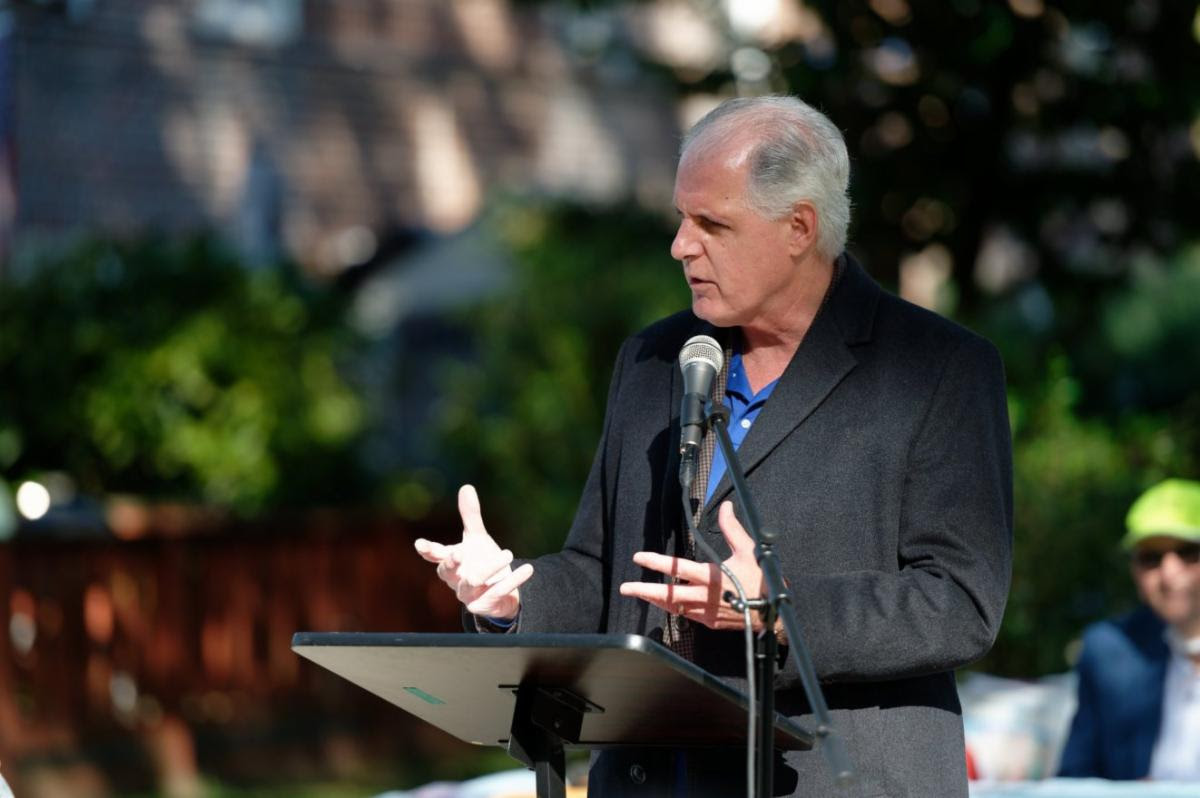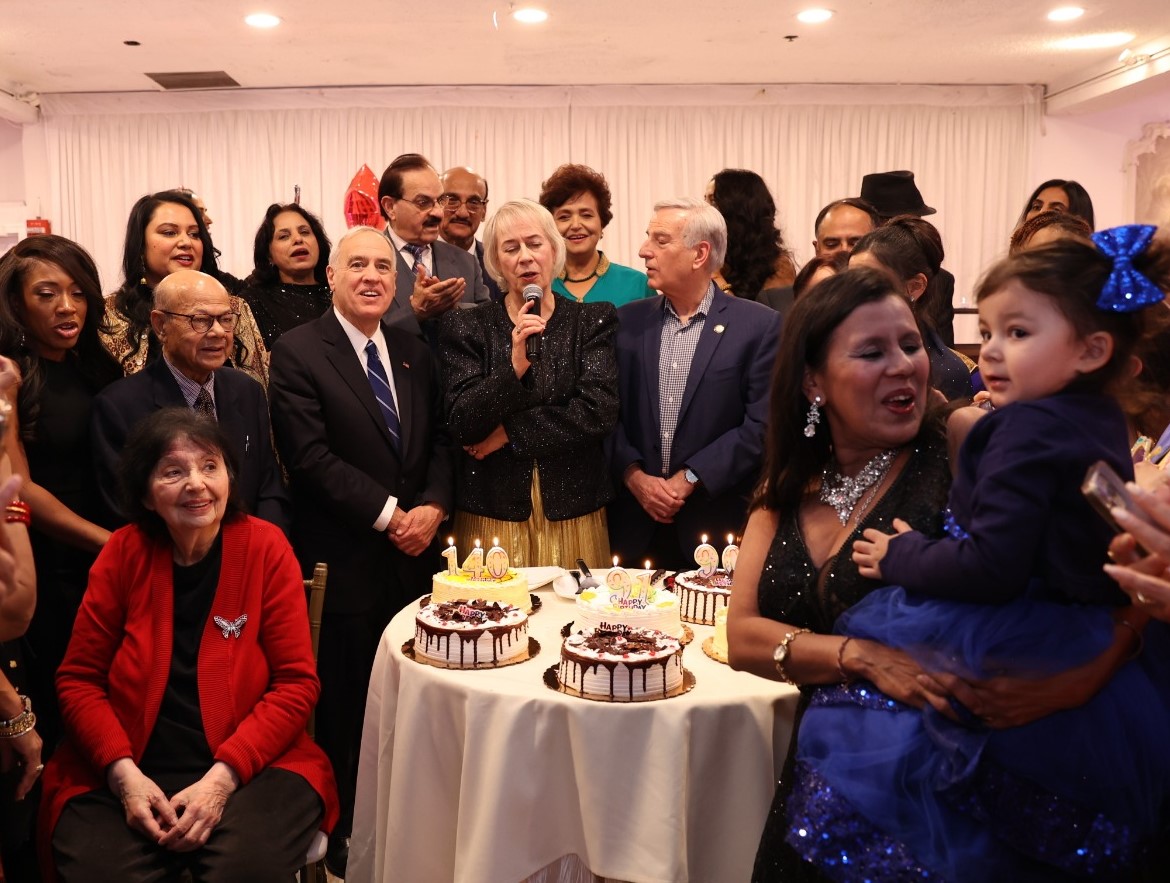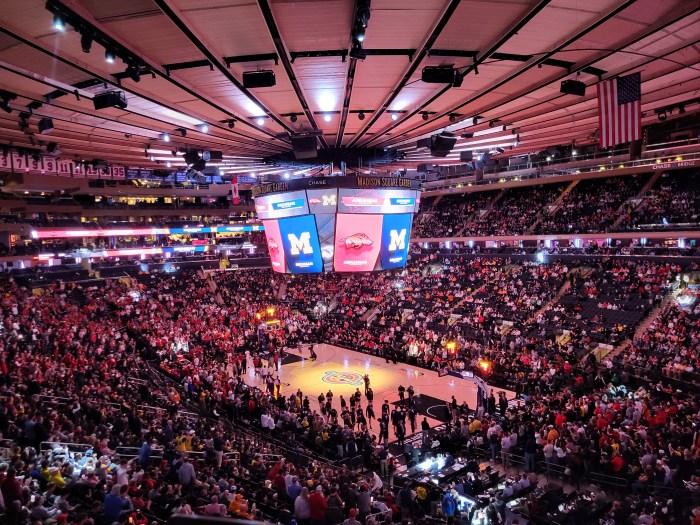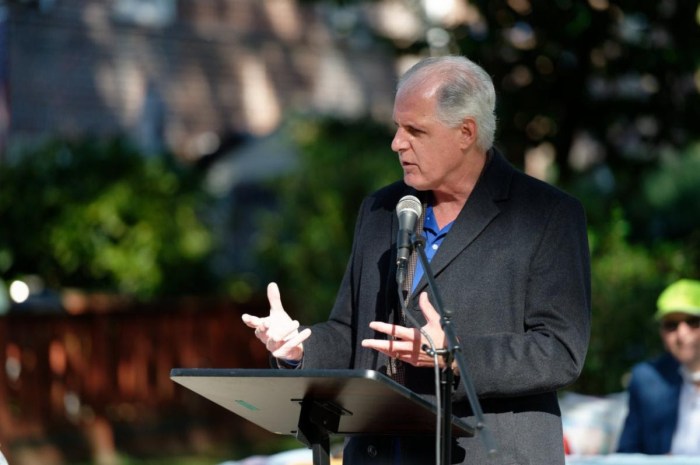By Kara Bloomgarden-Smoke
Soho residents’ hysterical reaction to a plan for a Sunday pedestrian mall on Prince St. at a meeting last week might have made one think the city planned to plop a nuclear reactor or a maximum-security prison into the heart of the trendy district.
On Tues., March 11, the Department of Transportation presented its proposal to close Prince St. to automobile traffic to Community Board 2’s Traffic and Transportation Committee. More than 100 people packed the meeting, held in a classroom in New York University’s Silver Building on Waverly Pl.
Immediately, things started off contentiously, as Andy Wiley-Schwartz, D.O.T. assistant commissioner of planning and sustainability, introduced himself to loud hissing and booing. As Wiley-Schwartz started his PowerPoint slideshow, the deafening disapproval of the crowd prompted Shirley Secunda, the C.B. 2 committee’s chairperson, to threaten to toss people out of the meeting if they didn’t behave.
Secunda had to warn people she might eject them at several other points during the meeting. When one person refused to tone it down, Secunda made him apologize to Wiley-Schwartz.
“You might not agree with him, but he is still our guest,” said Secunda. A reluctant apology was issued, and the proceedings continued.
It ranked right up with the St. Vincent’s hearing last June in terms of rowdy and indignant community opposition.
“I haven’t seen anything like it since the 1968 Democratic Convention in Chicago,” said Sean Sweeney, director of the Soho Alliance, speaking afterwards.
“They were stirred up, it was mob behavior,” Secunda said a week later. “It was among the worst I have ever seen. It was a good thing we had speaker cards, otherwise it would have been far worse pandemonium.”
Speaker cards were distributed during the meeting, and Ian Dutton, the committee’s vice chairperson, called on the speakers who had signed up.
There were 39 speakers and the issue was discussed for nearly two hours.
Both Secunda and Sweeney agree that the meeting was wild, but disagree on whether that was a positive.
“I loved the crowd’s passion,” said Sweeney. “If it wasn’t for the anger of a crowd, we would all still be serfs.”
At one point during the evening, the door that led to an adjacent classroom slammed shut. A midterm exam was being given next door, and the professor was upset by the noise. Bob Gormley, C.B. 2’s district manager, suggested that people snap their fingers instead of applauding and cheering points. Some took up the suggestion, but many others quickly forgot the idea.
A main complaint was that the proposal — to close Prince St. to car traffic between Lafayette St. and West Broadway on Sundays from Memorial Day to Labor Day — would lead to an increase of vendors, as well as pedestrians. There was general agreement that vendors are currently a major problem in the area, and the lack of past enforcement made many of the plan’s opponents skeptical of D.O.T.’s claim that the agency would be able to keep Prince St. from turning into a de facto street fair on Sundays.
“It is a myth and a lie that you can control vendors,” said one resident at the meeting. This statement was met with deafening cheers.
“It is true that there are many loopholes in the legislation that deals with vendors. It is a valid point,” said Dutton. “But currently Prince St. is unpleasant on weekends and the vendors make it unsafe to get by because there is so little sidewalk space that pedestrians are forced to walk in the street.”
“I could not get a straight answer during the meeting on whether people like Soho the way it is now,” said Dutton. “Not one person who said that the proposal would spell the end of Prince St. was willing to give their current opinion of the street.”
There was concern that ambulances and fire trucks would not be able to get through.
“What if there was a fire in the Apple Store?” one person asked.
“I live on Mulberry St. and it is a real s–t hole,” said Lillian Tozzi. “Mulberry St. is your future.” Tozzi recounted the story of a woman who had a heart attack and the ambulances that could not get through the crowd. “She died,” said Tozzi.
“What about people who need to be driven to their doorways? The plan does not take into account the elderly or people with small children,” said one speaker.
“What about the traffic from people coming back to the city from the Hamptons?” asked somebody else in the crowd.
A major sticking point was that the community had not been consulted prior to the presentation.
One speaker asked what the point was of keeping the north-south streets open to traffic as outlined in the proposal.
“We thought it would be a smaller bite,” said Wiley-Schwartz. “Easier to present to the community.” This statement was met by predictable outrage.
“You shot yourself in the foot,” a speaker told Wiley-Schwartz. “You should have gotten community input.”
“If there was a different kind of process, maybe people would have been stirred the other way,” said Secunda.
The Traffic and Transportation Committee drafted a resolution that the full board of C.B. 2 disapprove the proposal, and the matter will be discussed at the full board meeting on Thurs., March 20.
“In the resolution, we thanked D.O.T for their good intentions,” said Secunda. “We recommended that they set up a process in the future to come and work with the community.”
Dutton remained hopeful that the community and D.O.T will be able to work together to see this plan succeed.
Although the community board’s final decision is only advisory, Secunda feels that D.O.T will not go through with the proposal in the face of such strong opposition.
“It is just my personal opinion, but I don’t think D.O.T will go ahead with this,” said Secunda.
“If D.O.T goes ahead with this, there will be civil disobedience,” said Sweeney. “It is very easy to rip No Parking signs and dismantle the barricades.”




































